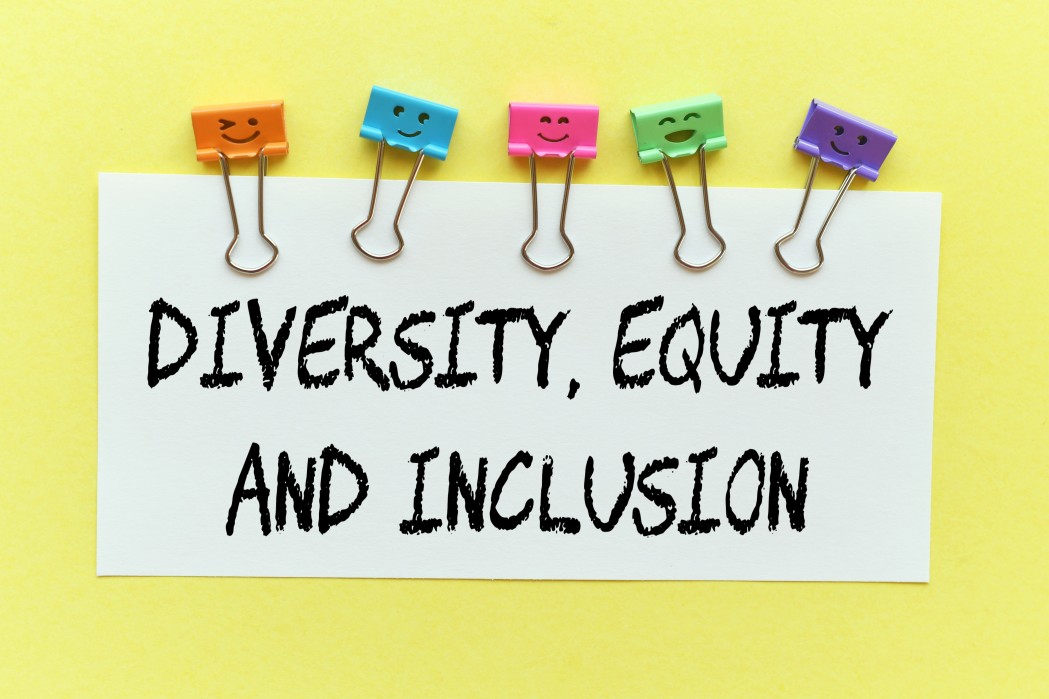
Use Data to Meet DE&I Goals
“As we now know, our hopes for increased diversity, equity, and inclusion (DEI) in tech have not come to fruition. The industry remains overwhelmingly white, Asian, and male-dominated, especially in technical jobs"
The findings of This article, entail 4 key insights on how to best use diversity data.
4 Simple Steps
“As we now know, our hopes for increased diversity, equity, and inclusion (DEI) in tech have not come to fruition. The industry remains overwhelmingly white, Asian, and male-dominated, especially in technical jobs: For example, Black and Latina's women hold only a combined 4% of computing occupations.”
The Harvard Business Review article: ‘How to Best Use Data to Meet Your DE&I Goals’ dove into answering the question of whether diversity data is unique, in the sense that the data would not drive behaviour in the same way as data does in other domains. The conducted study proclaims that when done right, the collection, analysis and disclosure of diversity data holds a promise of being a powerful lever for progress.
The findings of This article, entail 4 key insights as to how to make the best use of diversity data.
1 - Simple, Salient and Comparable
Data is an incredibly enriching and intuitive way to gain insights. However, if you are unable to read and understand it, then the data collected is of little to no use. It is therefore imperative to present diversity (or any) data in such a manner that is easy to understand and, in a dashboard, or scorecard that is relevant to intended users.
It is, furthermore, important to present the data in such a way that makes for easy comparisons. By being able to benchmark allows to identify patterns early and intervene swiftly in the face of irregularities. By not presenting the data in a comparable way, there is no way of knowing whether there have been improvements or deteriorations.
2 - Leverage Diversity Data to Empower The Right People to Act
“Since the key actions shaping an organization’s workforce composition are external hiring, internal (lateral) hiring, promotion, and turnover/retention, diversity metrics around each of these processes should be broken down and tracked by division, level, geography, and individual manager — and over time. Or better yet, like Atkins, organizations should empower employees themselves to track and measure organizational DEI metrics.”
To guarantee all-hands-on-deck when it comes to internal changes, employees need to understand the connection between their daily decisions and the resulting outcomes. If they are not aware of their impact on diversity, then they will unknowingly continue to act against the goal. If, however, they are made aware, then the company goal will empower the right employees to act accordingly, and real change is on the horizon.
3 - Set Diversity Goals to Create Accountability & Increase Follow-Through
“Goals are an even more potent mechanism to achieve behaviour change. They serve to mobilize both the will (motivation) as well as the way (effort and strategies) of behaviour change. Moreover, when goals are made public, they provide an accountability mechanism that research shows make us more likely to achieve our aims.”
So, setting goals, creating strategies for how to reach them, and publicly announcing the effort, will create an increase in accountability which will affect the follow-through rate positively. It is therefore not enough to only motivate your employees for change, nor giving your employees tasks without explaining the vision, as this would create frustrations and confusion. It is necessary that both the ‘will’ and the ‘way’ are carefully explained for change to happen. The public announcement will create motivation, team spirit and possibly brand improvements.
4 - Leverage Diversity Data to Shift Social Norms Around DE&I
“Instead of focusing on the lack of women on boards initially, they emphasized the overwhelming majority of companies that already had at least one woman on their board. Then, as the numbers of women started to increase further, the messaging focused on highlighting success stories, and naming and shaming the laggards, inducing competition between company boards as well as the executive search firms that supplied them with director candidates. As such, board gender diversity data played a catalyzing role in shaping norms by putting gender diversity on the agenda of boards and companies, and by creating reputational consequences for inaction.”
Norms are powerful influencers of behaviour, so by putting the focus on diversity success stories, there is a good chance of creating a bandwagon effect, meaning that other companies will follow in fear of becoming a laggard. By then shifting perspective and focusing on those who have not taken diversity measures, will worsen their brand image, but more importantly, hopefully, push them in the direction of change on the matter.
The Actee data module ensures automatic data collection on the topics of your sessions. You will gather all participants data on said topic, in an easy and comparable way. To exemplify, you can read the whitepapers created on the insights generated by the data module: 'A Kotter-Esque View On The Pandemic' & 'Students Are More Likely To Seek Answers Through Technology Than Us In The Workforce.'
“Manage DEI in exactly the same rigorous and data-driven way you manage the rest of your business. Achieving DEI objectives requires no more and no less than the use of the same planning, feedback, and accountability processes that are deployed to reach targets in sales, product development, and budgeting. Data drives targeted action and creates accountability in these domains, and so it should in DEI as well.”
Learn more about how Actee tools can be applied here.
This summary is based on the article by Harvard Business Review - read it here.
Create a free subscription here and if you need any assistance, you can find guidance here.
